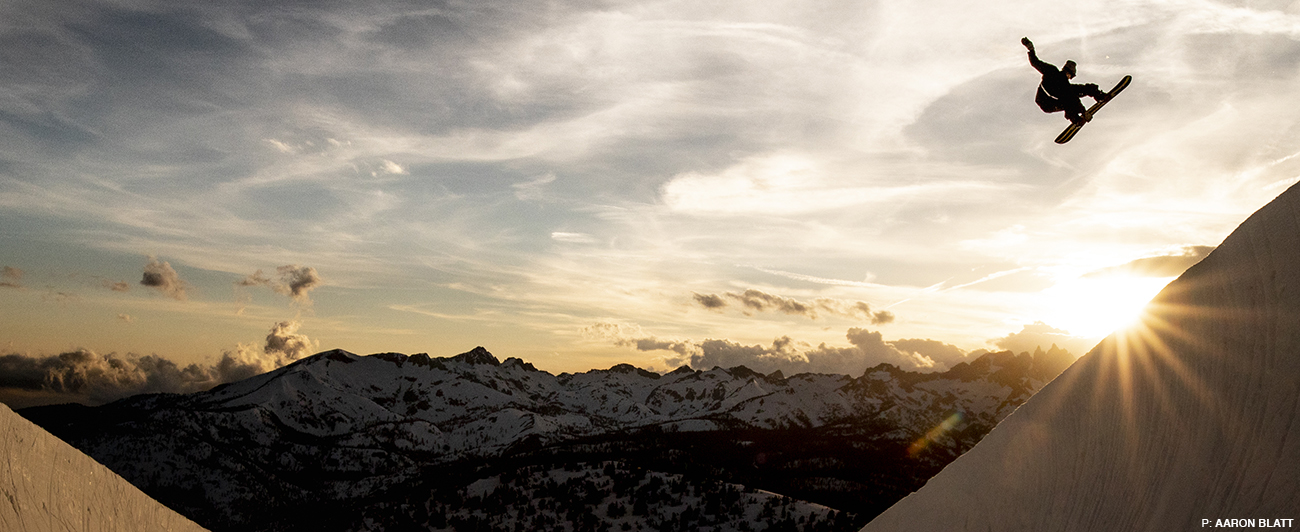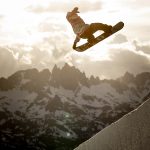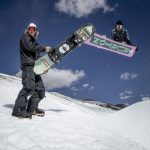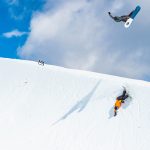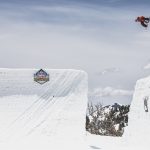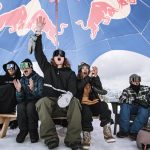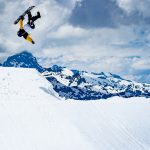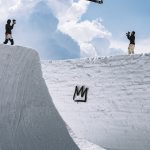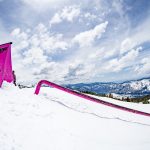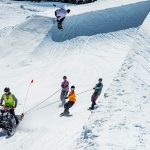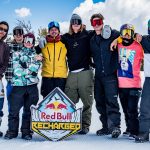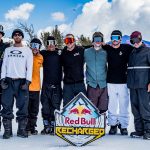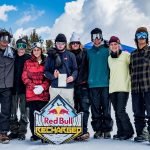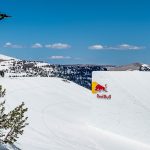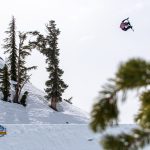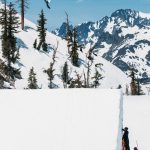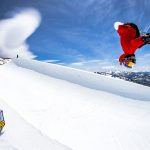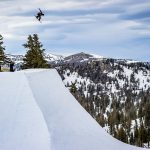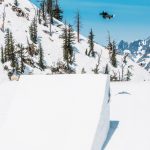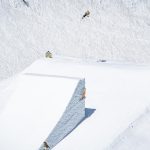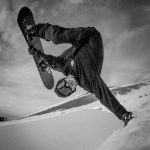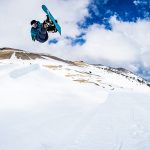Photo and Video Feature
Red Bull Recharged 2019
Good for Mainstream, Cool for Core
“It’s not that I’m tired of competing, it’s the format,” Ben Ferguson says. After countless contest circuits and even an Olympic debut in Pyeongchang last year, Ben’s just grown tired of running the same old routine. “I’m not too hyped on the standard, Groundhog Day, back-and-forth halfpipe. I don’t really want to do it anymore, honestly. There’s just so much in snowboarding to figure out. I feel like I did that enough, and it’s time now to do some other shit.”
It’s been said 1,620 times before: Mainstream snowboard competitions have gotten stale. Critics say there’s too much emphasis on amplitude and spin count, not enough on style and line choice. Fortunately for its future, some of snowboarding’s top competitors agree. Ben and fellow Olympian, Mark McMorris, are working to change the status quo in contest layouts, influence a shift in public terrain parks across the country, and build better relationships between contest riders and those who prefer filming. That’s where Red Bull Recharged comes in.
Inspired by Danny Davis and Peace Park, Ben and Mark created Red Bull Recharged, an event that holds amplitude and style to equal importance—the latter arguably more so. Earlier this month they rallied a handful of riders to Mammoth Mountain, CA for its inaugural year. “This was like a beta phase, test event,” Ben says. The course opened up with a halfpipe leading into a variety of jumps and transitions, some jibs, a big air jump and one hell of a hip. Led by legendary terrain park shaper Frank Wells, the park crew constructed features to be US Open-big but flowing in a dozen different directions.
“We’re super-inspired by collaborating transition riding with rail riding and jumps, because there’s so many riders who are good at it all that don’t necessarily want to focus on just one thing,” Mark says. “We designed features we’ve hit before, but in a way that they would work better together—that halfpipe step-over to jump landing, some [Holy] Bowly inspired stuff, a really good hip. It was pretty much everything we could have hoped for.”
To further break away from a traditional contest approach, the guys decided against having on-site judges and scored runs. Instead, riders broke into three teams of seven with one filmer designated to each crew. The teams would have five days to film 10-clip edits, which were then submitted to Travis Rice to watch, critique and declare a winner. In the end “Team Ben” took the top spot, but it didn’t seem all that important to the riders who won.
“The video contest was actually a [Aaron] Blatt and T. Bird idea,” Ben says. “We all thought it was a cool concept and ran with it. It’s fun to work with a filmer and group of riders to get stuff done, sessioning with your homies and filming instead of lapping just to learn a trick to do it in a contest.” Mark is quick to back Ben up. “Snowboarding is an individual sport a lot of the time, and it was really nice to do it as a team for once,” Mark says. “It was all just funny camaraderie and friendly competition between our teams, no pressure whatsoever. Do what’s fun; don’t ride something you don’t want to ride just because that’s the thing you’re expected to ride.”
Ben and Mark both feel that the event’s focus on filming will inspire its invitees—mostly competitive riders—to get more involved in the video side of snowboarding. “I hope the kids get hyped. I’d like to see them learn how to film, because that’s a big part of snowboarding that some contest kids don’t understand,” Ben says. Since these contest riders are well known to snowboarding’s more mainstream audiences, influencing them to promote filming and style as much as they do flawless contest runs might lead their critics to believe that they can better represent snowboarding.
“I think it’s good for the mainstream because it’s Red Bull, Mark McMorris, all these gnarly dudes who are known in the mainstream, so it’s big, blowing up,” Ben says. “I think it’s cool also for the core side of snowboarding because it’s kind of pushing the way park features are built, changing the way contests are run, and opening it up to more snowboarders, not just the big contest dudes. Like, it’d be sick to have Danimals here next year, especially if we continue with the film contest vibe. It’d be rad to merge the two scenes and see some of these guys hanging out with each other, because it’s pretty separate right now, the film side of snowboarding and the contest side of snowboarding. But it’s cool when they get together, and it’d be healthy for snowboarding.”
“Inclusivity is really important for snowboarding right now,” Mark says. “I think Danny [Davis] is a huge inspiration for Ben and I in that he’s so respected by the core and the masses. He’s a household name, but he’s also so for snowboarding in all the right ways. Ben and I want to highlight that we’re on that same page, and are trying to use our status to make snowboarding as dope as we can, and not eliminate people or make it unobtainable. We just want to bring people into this sport and make it look fun, because it is a ton of fun. I hope people are down with it.”
See the full video battle and Travis Rice’s verdict here:
Thanks to Luke Westnedge and the Red Bull Snow crew for facilitating the trip and to the Mammoth Mountain Inn for a spot to crash.
